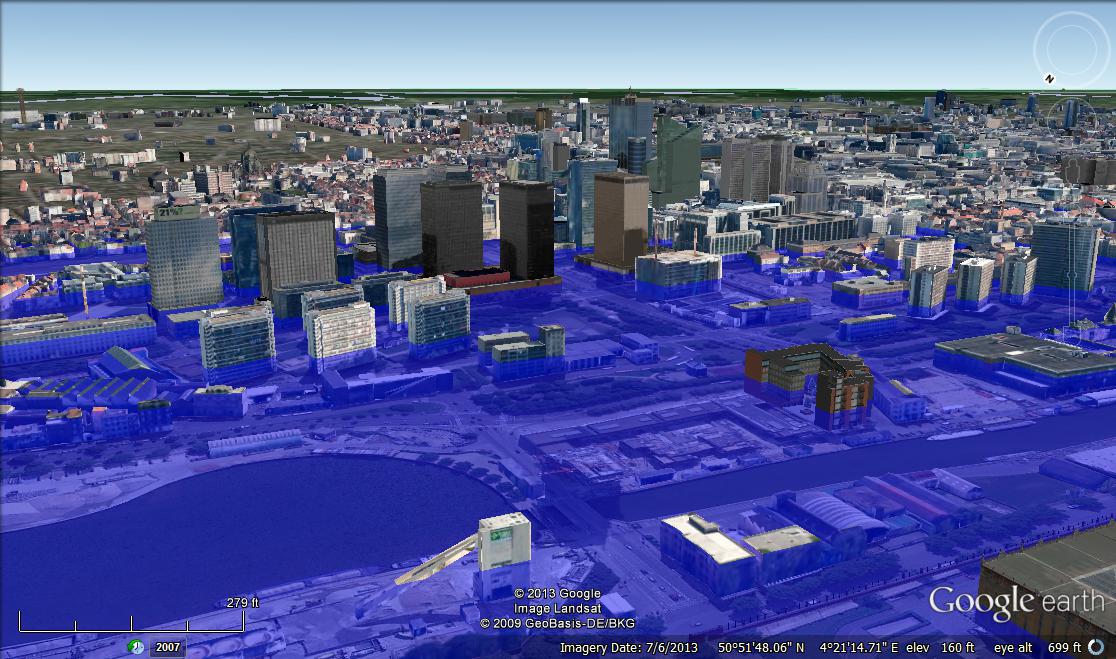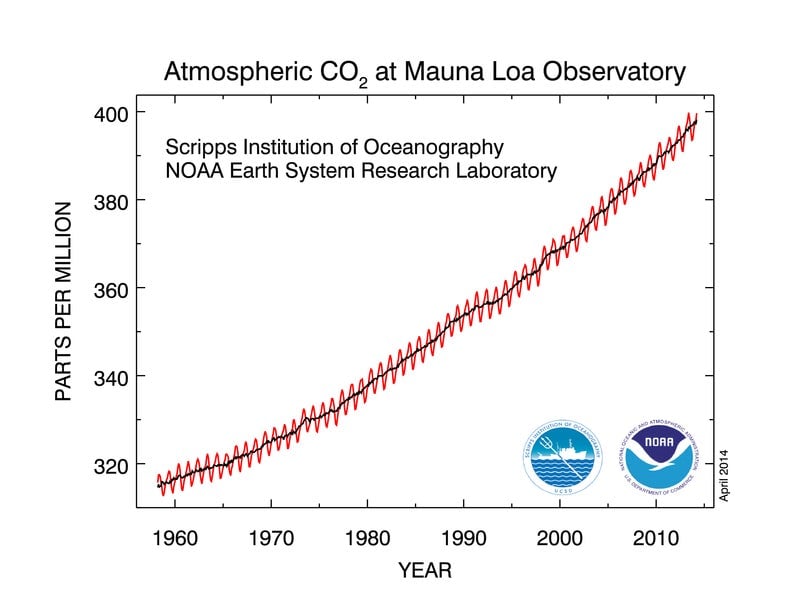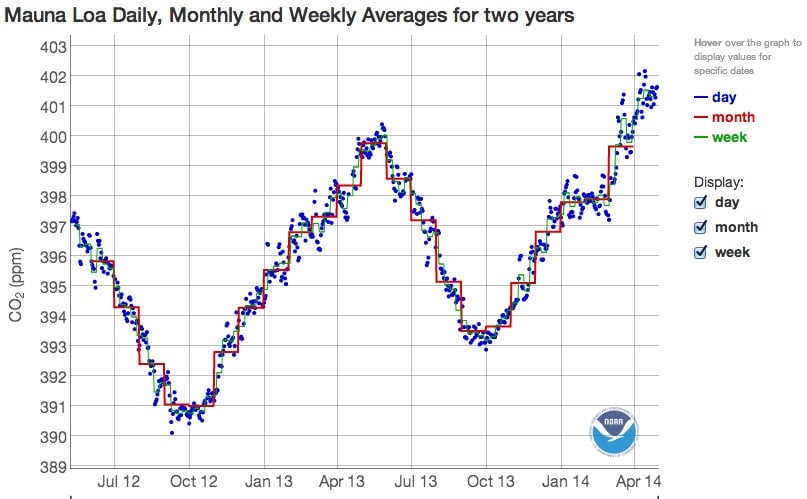The last time CO2 levels were this high, this much water covered what’s now Brussels
Savor this last day of April 2014—it has been a remarkable month in the history of the earth. It’s the first month in recorded history in which the levels of carbon dioxide in the atmosphere have exceeded 400 parts per million (ppm) every day of the month, according to readings by the US’s National Oceanic and Atmostpheric Administration taken atop a volcano in Hawaii.

Savor this last day of April 2014—it has been a remarkable month in the history of the earth. It’s the first month in recorded history in which the levels of carbon dioxide in the atmosphere have exceeded 400 parts per million (ppm) every day of the month, according to readings by the US’s National Oceanic and Atmostpheric Administration taken atop a volcano in Hawaii.
Carbon dioxide—or CO2, as it’s better known—is perhaps the most notorious greenhouse gas. It’s pumped into the atmosphere by the burning of fossil fuels such as oil and coal, and where plants once absorbed it, the razing of the planet’s forests means more and more of it hangs around in the atmosphere. CO2 is also incredibly long-lived, able to endure for centuries or even a millennium.
Since CO2 traps solar energy that would otherwise dissipate into space, the big worry here is that the more of it that’s around, the faster the world heats up. And this record-breaking April tells us that there’s a lot more of it around than ever in Homo sapien history.
To offer some historical context, CO2 levels have been at 180-280 ppm levels for at least the last 800,000 years, based on the analysis of ancient bubbles trapped in Antarctic ice sheets, reports Climate Central. Another recent study found that the last time CO2 levels were consistently this high was between 10 and 15 million years ago (paywall). Other research suggests CO2 levels may have hovered around the same levels (pdf) between 2 million and 4.6 million years ago (paywall).
“This was a time when global temperatures were substantially warmer than today, and there was very little ice around anywhere on the planet. And so sea level was considerably higher—around 100 feet [30.1 meters] higher—than it is today,” Michael Mann, a climate scientist at Pennsylvania State University, told Climate Central. But you don’t have to dig back to the Pliocene epoch to be alarmed by April’s CO2 levels, Mann said: “There is the possibility that we’ve already breached the threshold of truly dangerous human influence on our climate and planet.”
Even by the standards of very recent history, this month is astonishing. The US’s National Oceanic and Atmospheric Administration started measuring CO2 from a site on the Hawaiian volcano Mauna Loa back in 1958. In case you’re wondering, those zig-zags on the chart below show plants in action. Every spring and summer, they suck CO2 from the atmosphere in order to photosynthesize. As you can see, though, their yearly intake isn’t enough to keep CO2 levels down.

The significance of that 400 ppm number is clear from the chart below, showing that measurements passed that threshold at Mauna Loa for the first time on May 19, 2013, then surpassed that number over the past month.

And that’s what’s really disquieting—the brisk clip at which CO2 levels are rising. The faster the earth’s climate changes, the more dramatically humans will have to adapt.